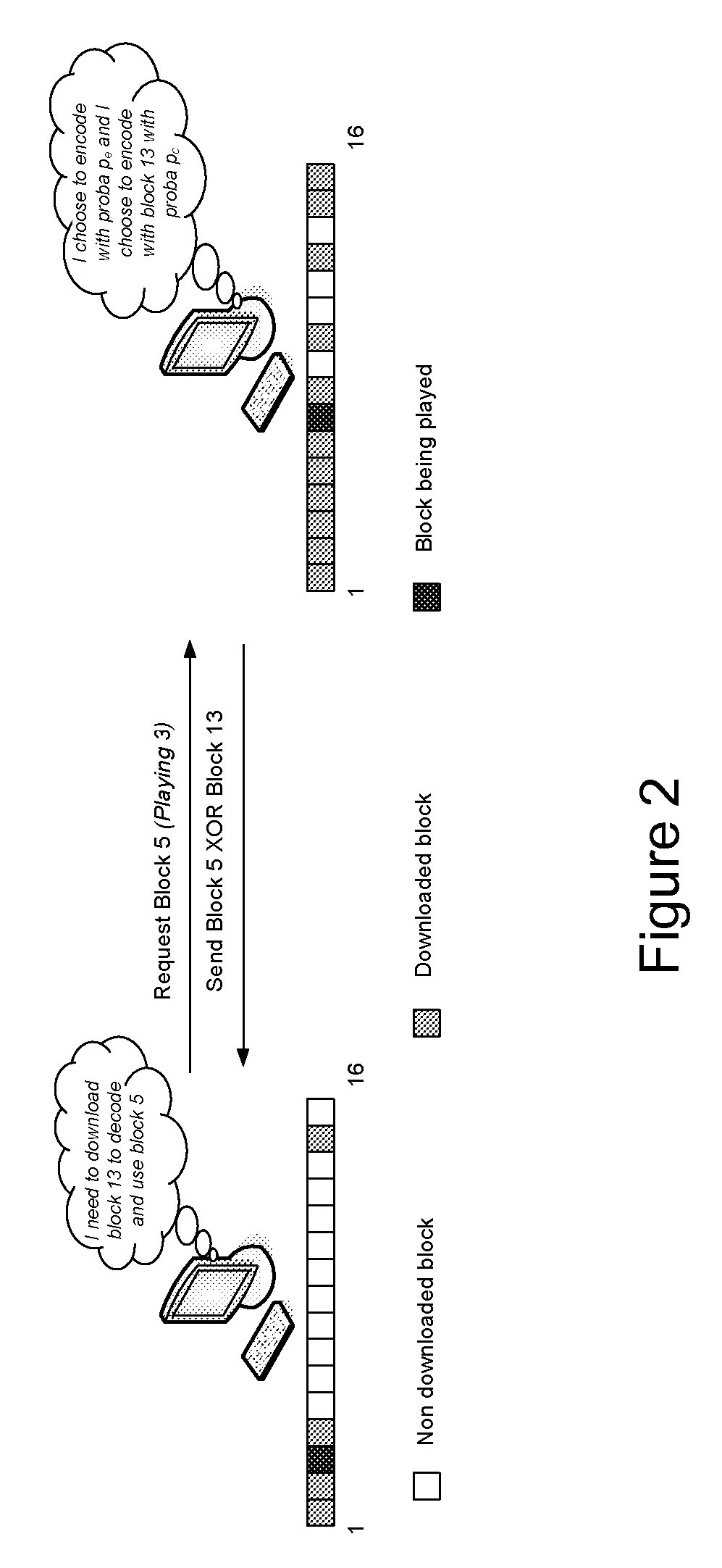Method for providing incentive mechanisms for out-of-order download in communication networks dedicated to the distribution of video-on-demand content
a technology of video-on-demand content and incentive mechanisms, applied in the field of communication networks, can solve the problems of not ensuring data persistence, selfish behavior that affects global performance, and is subject to selfish and malicious behaviors, and achieves the effect of simple yet efficient, efficient and secur
- Summary
- Abstract
- Description
- Claims
- Application Information
AI Technical Summary
Benefits of technology
Problems solved by technology
Method used
Image
Examples
Embodiment Construction
[0047]In a sense, the present invention relates to a method of transferring content from a communication device D1 to another communication device D2 in a communication network.
[0048]The method according to the present invention is illustrated on FIG. 12.
[0049]In the following detailed description, we consider a peer-to-peer communication network comprising a plurality of communication devices (peers).
[0050]The communication device D (a peer) shown on FIG. 13 comprises a communication interface 11, a processor 12, a volatile memory 13 and a non-volatile memory 14.
[0051]The processor 12, the volatile memory 13 and the non-volatile memory 14 are used for storage and processing.
[0052]The present invention focuses on how peers behave when replying to another peer's requests. FIG. 2 shows a small exchange when a peer downloading a block 5 is forced to download (out-of-order) a block 13. In the rest of this specification, a video file compound of L blocks is considered.
[0053]First, when a...
PUM
 Login to View More
Login to View More Abstract
Description
Claims
Application Information
 Login to View More
Login to View More - R&D
- Intellectual Property
- Life Sciences
- Materials
- Tech Scout
- Unparalleled Data Quality
- Higher Quality Content
- 60% Fewer Hallucinations
Browse by: Latest US Patents, China's latest patents, Technical Efficacy Thesaurus, Application Domain, Technology Topic, Popular Technical Reports.
© 2025 PatSnap. All rights reserved.Legal|Privacy policy|Modern Slavery Act Transparency Statement|Sitemap|About US| Contact US: help@patsnap.com



